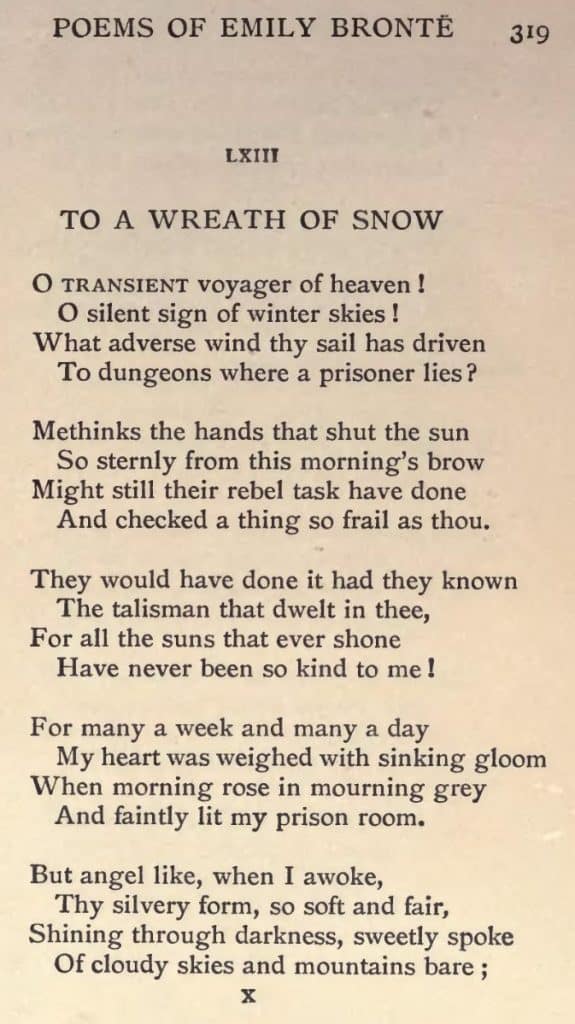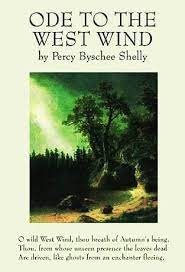Reflecting on each other’s personal lives, Percy Bysshe Shelley and Emily Bronte meticulously explore the theme of hope in their poems, Ode to West Wind and to a Wreath of Snow respectively.
The West Wind which has the power to both destroy and preserve is shown as a symbol of change and hope in the hope whereas, on the other hand, written in Bronte’s fantasy world of Gondal, the snow is personified as something that brings hope and light into the dark world.
Even through their sufferings, both poets see the light at the end of the tunnel and conclude that no matter how miserable or sorrowful they are, there is still hope for a better world.
Throughout most of his life, Shelley rebelled against conservative societal values for which most of his works reflect his radical views and ideas. All throughout his life, he hoped for a society without sufferings, misery and evil, he wished to bring about a change. The West Wind in this poem is the very symbol of that change he wishes to bring.
“Destroyer and Preserver, hear, oh hear!”- Destroyer and preserver are two traditional names given to the Hindu Gods, Shiva and Vishnu respectively. By combining these opposite figures, Shelley shows the duality of the West Wind which is capable of both destroying and preserving life. “Yellow, and black…Pestilence-stricken multitudes”, here, words such as yellow, pale and pestilence stricken connotes sickness and decay; the poet treats the West Wind as a force of death and decay.
However, the poet also praises the power of the wind in the first two stanzas. Using similes and allusions, ‘loosen”, “spread”, “shed’, “burst”, the power of the wind is highlighted. Even though the French Revolution brought with it unbearable suffering and hardship for people, the aftermath of it would result in a new and better world with progressive visions of equality, fraternity, and freedom for everyone.
Ultimately, this ray of hope is what Shelley tries to build by portraying the dual powers of the West Wind. Shelley shows that even after all of the destruction havocked by the West Wind, there is still hope for better days and new beginnings. On the other hand, similar to Shelley, Bronte uses the power of nature to see hope and light amidst her sorrows.
In the same year that this poem was published, Emily’s sister Anne Bronte became severely ill. The poet was so overwhelmed by grief afterward she decided to dwell in and write about the fantasy world of Gondal which they created together. The beginning of the poem reflects great sorrow and misery but then the narrator apostrophizes the snow as if it had saved her and given her hope.
Through the voice of Almeda, Bronte voices her loneliness; the prison cell is symbolic of Bronte’s own sense of confinement and alienation from the world. Bronte uses a plethora of religious images in her poetry. Here the snow is described as a “transient voyager of heaven”, suggesting that it is divine but fleeting. By doing so, she makes it sound as though God himself sent her rays of hope by blessing her with snow.
Written in Terza rima, West Wind conveys the idea of hope in a very interesting way. “Dead leaves are driven, like ghosts from an enchanter fleeing”, even though the West Wind is a powerful and destructive source for driving away from the bliss of summer and bringing with it instead winter, death, and decay, the poet celebrates its arrival and welcomes destruction because Shelley understands that for rebirth and renewal, destruction is vital.
With the final line, “If Winter comes, can Spring be far behind?” Shelley makes a prophecy that no matter the destruction, good days with the hope of a better society will surely follow. On the flip side, To a Wreath of Snow is told in quatrains with an abab rhyme scheme, suggesting the mundane nature of the speaker’s life, and the repetitive process of waking up in the cell. In the final stanza, Bronte uses half-rhymes “gone” and “tone”, failing to give us the sense of closure that we expect at the end.
Arguably this change in pattern reflects a shift in the speaker’s mindset, as the presence of the snow provides a comfort that will subsist after it melts. Even if the comfort and the signs of hope are temporary, the poet appreciates it and sees the snow as a direct gift from God. “Sinking gloom”, “rose in mourning grey”, the juxtapositions here suggest that when one thing goes down, something else has to surely come up. To compensate for her sufferings, God blessed her with snow.
Shelley is ultimately is able to draw inspiration from nature and he wishes to deliver the same message of hope to others and be a source of inspiration himself while Bronte makes the most of the transient snow and even if only for a fleeting moment, finds hope in God’s gift of nature.


